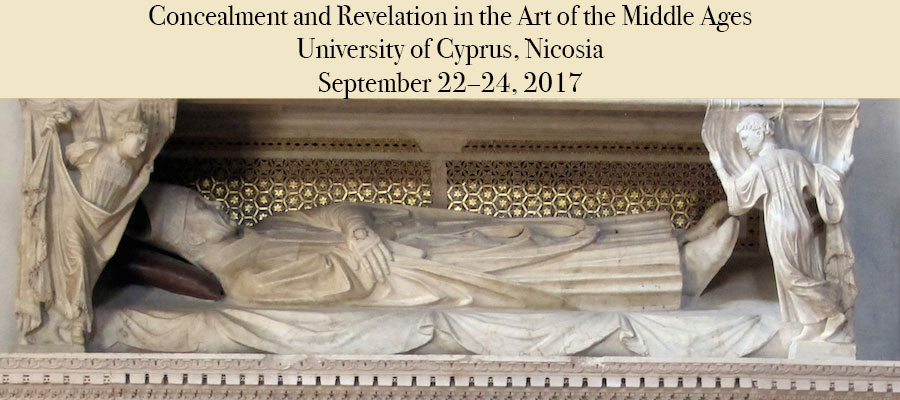Concealment and Revelation in the Art of the Middle Ages, University of Cyprus, Nicosia, September 22–24, 2017
‘To reveal art and conceal the artist is art’s aim’ – thus Oscar Wilde in his aphoristic Preface to The Picture of Dorian Gray (1891). In the western intellectual tradition, art has repeatedly been conceived and understood as existing at the intersection of the antithetical notions of concealment and revelation – from the old unattributed adage that ‘it is true art to conceal art’ (ars est celare artem) to Robert Rauschenberg’s lapidary statement about the ability of a work of art to reveal something beyond itself (‘A light bulb in the dark cannot show itself without showing you something else too’, scribbled in pencil on the photo collage entitled Random Order, c. 1963). Veiled or unveiled, obscured or illuminated, opaque or transparent, works of art are often invested with meaning(s) and function(s) at the liminal moment of transition from the one state to the next; after all, to resort again to Wilde’s witty prose, ‘the commonest thing is delightful, if one only hides it’.
Recent scholarship on medieval art has brought such considerations to the fore, by tackling issues of screening, veiling / unveiling, temporal and performative transformations, the permeability of barriers and the movement of objects in space, among others. The visibility of sacred relics and their reliquaries, the metal revetments and textile curtains of miracle-working icons, the folding wings of northern European altarpieces, the parting womb of the Vierges ouvrantes or Schreinmadonnen and the porosity of choir screens East and West have all received fairly extensive treatment in monographic studies and specialist articles. Nevertheless, the juxtaposition of these individual phenomena within a broader framework, encompassing both the religious and secular sphere, as well as several different religious traditions, has only seldom been attempted.
The present conference aspires to explore the role of the concept and the act of concealment and revelation in the arts of the Latin West, Byzantium, Islam and Judaism in the course of the Middle Ages (defined chronologically as c. 500-c. 1500). Subjects to be broached include, but are not limited to, the use of curtains or veils in screening objects or spaces; the function of permeable screens (in a variety of materials and media) in structuring accessibility, whether physical, visual, aural or spiritual; the performative aspect of concealing and revealing in all its civic and private manifestations, and the issues of emotional manipulation thereby raised; the role of gesture and spatial motion in the performance of concealment and revelation; the hierarchy of sacred and secular space as the outcome of its compartmentalisation; and the representation of these practices in the pictorial arts.
